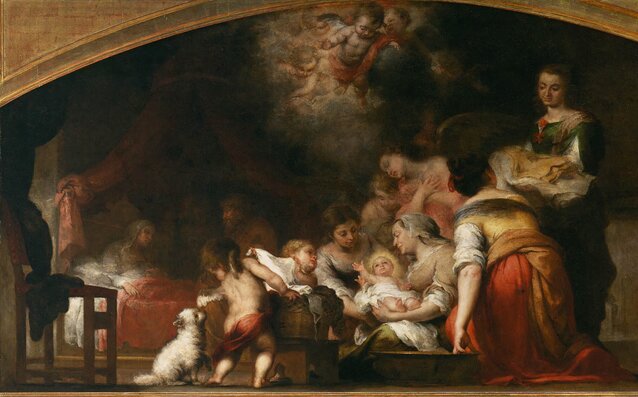With Delight I Rejoice in the Lord: The Birth of Our Blessed Mother Mary
Fr. Hugh Gillespie, SMM
With Delight I Rejoice in the Lord: The Birth of Our Blessed Mother Mary
T he Gospel tells us of the genealogy of Jesus Christ, as well as the details on the birth of Christ.
Before the Gospel, the chant repeated includes the verse: With delight I rejoice in the Lord. This is a strange verse, since much of the world’s joy, does not include delight. What really does that mean?
On this day, the Cause of Our Joy, and the delight, is the birth of she who is the Mother of Jesus Christ. We do not simple rejoice in the birth of Mary. We rejoice in the birth of the Mother of Jesus Christ! This is a remarkable mystery. Hear more within the Homily!
Listen to this Meditation Media.
Return to Meditation for the Week

The Birth of the Virgin: Spanish Artist: Bartolomé Esteban Murillo: 1661
This artist appears several times on this website, especially around the Lenten Season. Several paintings include: 1, 2, and 3.
This painting is unique. It was originally painted for the Chapel of the Immaculate Conception in Spain. This painting and the Immaculate Conception painting (link) were taken to France and now reside in the Louvre, Paris, France.
What also makes this painting unique is its nature. One would not really know it is a religious painting, other than the presence of angels and the halo around Mary.
The Virgin Mary is supported by a group of women, as St. Anne appears in bed on the left in the shadows. The group of women are also in the shadows as the only real light illuminates from the Virgin Mary. Next to St. Anne one can also see St. Joachim.
Take a moment to study and meditate on this detail of the painting.
With Delight I Rejoice in the Lord: The Birth of Our Blessed Mother Mary


